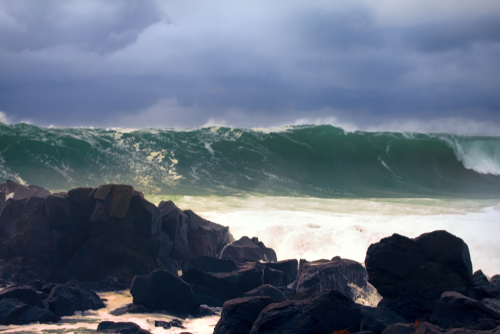Calls for Category 6 Grow as Hurricane Milton Nears Florida with Record Winds
Hurricane Milton, one of the most powerful storms ever recorded in the Atlantic, has spurred renewed calls for a new Category 6 hurricane designation. As it barrels toward Florida’s Gulf Coast, Milton has displayed unprecedented strength, with wind gusts exceeding 200 mph, leading meteorologists to question whether the current Saffir-Simpson scale, which tops out at Category 5, is still adequate to measure the intensity of modern storms.
BREAKING: The storm surge for Hurricane Milton is expected to be 15 feet.
To give you an idea of how deadly this is, here's what 9 feet looks like:pic.twitter.com/0SxfrA9XK3 https://t.co/56ZLtpOIbi
— Financelot (@FinanceLancelot) October 8, 2024
Initially forming as a tropical storm in the Gulf of Mexico, Milton intensified at a stunning pace. In less than 24 hours, it leaped from a Category 3 to Category 5 storm, with sustained winds reaching 180 mph. While the storm was downgraded to Category 4 on Tuesday morning, forecasters at the National Hurricane Center (NHC) have warned that further strengthening is possible before it makes landfall. Florida residents have been bracing for the storm's catastrophic impact, particularly in the Tampa Bay area, where a storm surge of up to 15 feet is expected(
Hurricane Milton may cause 15-foot storm surges in Tampa. This is what a 15-foot surge looked like in Fort Myers during Hurricane Ian two years ago (via MesoMax919). Stay safe:pic.twitter.com/giWUrkbeH3
— Tim O'Brien (@TimOBrien) October 8, 2024
)(
).
The debate surrounding the introduction of a Category 6 designation stems from Milton's extraordinary power. Noah Bergren, a Florida meteorologist, remarked that the storm's intensity was nearing the "mathematical limit" of what Earth's atmosphere could produce. Some experts argue that storms like Milton, fueled by warmer ocean temperatures, represent a new class of hurricanes that far exceed the damage potential of a standard Category 5 storm(
).
Prominent climate scientists, including Michael Wehner and Jim Kossin, have been advocating for this new category in recent studies, warning that climate change is likely to drive more frequent and intense storms in the future. Their research has identified multiple hurricanes in recent decades that would have qualified as Category 6 under a revised scale(
).
However, not all meteorologists are on board with this change. Mike Rawlins from Fox Weather pointed out that the current scale already represents near-total destruction at Category 5 and questioned whether adding a new category would meaningfully improve public safety or storm preparedness. Nevertheless, the extreme winds and barometric pressure readings of storms like Milton make it increasingly difficult to ignore the need for an updated system. Milton’s pressure has dropped to a staggering 924 millibars, placing it among the most intense hurricanes ever recorded(
).
As the storm approaches Florida, evacuation orders have been issued for low-lying coastal areas. The NHC has warned that the storm surge could be deadly, particularly in areas where the shallow Gulf waters will exacerbate flooding. Florida’s Gulf Coast has been the target of multiple intense storms in recent years, but Milton's sheer strength has rattled even the most experienced forecasters.
The storm is expected to make landfall late Wednesday, with the eye of the hurricane likely to pass near or over Tampa. Depending on Milton’s final trajectory, the damage could be widespread, with many communities facing life-threatening flooding, severe wind damage, and prolonged power outages. The rapid intensification of the storm, combined with its potential to re-strengthen before landfall, has added an extra layer of unpredictability to an already dangerous situation(
).
The Saffir-Simpson Hurricane Wind Scale, which has been used since the 1970s, categorizes hurricanes based on sustained wind speeds. Category 5 begins at 157 mph, but some argue that the scale does not fully capture the destructive power of modern superstorms like Milton. The debate over a Category 6 designation, while not new, has gained urgency in the face of storms that seem to push the limits of what the current scale can accommodate(
).
As Milton moves closer to Florida, it continues to challenge the boundaries of meteorological understanding, and the calls for an expanded hurricane scale may soon be too loud to ignore.

